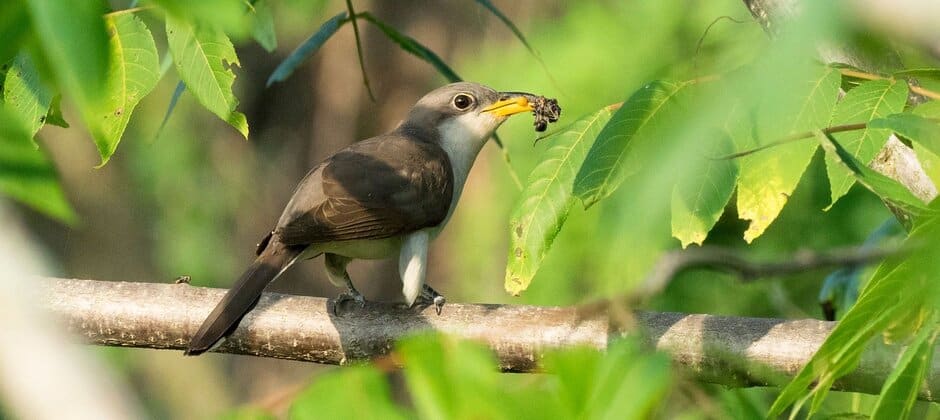Share this article
USFWS downlists woodpecker, keeps protections for cuckoos
The U.S. Fish and Wildlife Service announced its intention to downlist the red-cockaded woodpecker (Leuconotopicus borealis) from endangered to threatened under the Endangered Species Act last week.
Red-cockaded woodpeckers were first listed as endangered under the Endangered Species Conservation Act of 1969, the precursor to the ESA, after a century of habitat loss reduced the bird’s range to only a few states in the southeast. Estimates from the late 1970s found only 1,470 breeding clusters, or groups of cavity trees used by a colony of woodpeckers for nesting and roosting. Recent surveys estimate there are now 7,800 clusters across 11 states.
The woodpecker’s recovery relied heavily on partnerships with both the Department of Defense and the U.S. Forest Service, along with more than 30 other public and private organizations. Through these partnerships, over 1.3 million acres of longleaf pine stands have been established and hundreds of cavity inserts have been placed in trees for nesting.
Alongside the proposed downlisitng, the USFWS is considering a rule that will prohibit incidental take of red cockaded-woodpeckers as a result of actions that further degrade the species’ habitat, such as activities that would harass red-cockaded woodpeckers during the breeding season and insecticide use near nesting clusters. The rule, known as a 4(d) rule, would also prohibit intentional take. The administration recently changed the implementation of several aspects of the ESA, including 4(d) rules.
USFWS is accepting comments on the proposal to change the status of the red-cockaded woodpecker from endangered to threatened, as well as the proposed rule prohibiting incidental take, for 60 days once it is published in the Federal Register. Comment here by entering ‘FWS–R4–ES–2019–0018’ in the search box.
The USFWS also announced that it will not delist the western distinct population segment (DPS) of the yellow-billed cuckoo (Coccyzus americanus), after a 12-month review of the current best available scientific and commercial information.
The yellow-billed cuckoo breeds in North America during the summer and winters in South America. Habitat loss brought on by agriculture and water diversions for dams have resulted in dramatic declines in cottonwood trees and willows along rivers and streams in its breeding habitat, impacting the species throughout it range in the western United States. The USFWS is also in the process of revising critical habitat for yellow-billed cuckoos.
While there is no official comment period for the decision, the agency does ask that the public submit at any time any new information relevant to the status of the DPS of the western yellow-billed cuckoo or its habitat.
Header Image: The U.S. Fish and Wildlife Service announced it will not remove Western yellow-billed cuckoos from the Endangered Species Act. Credit: Andrew Weitzel








